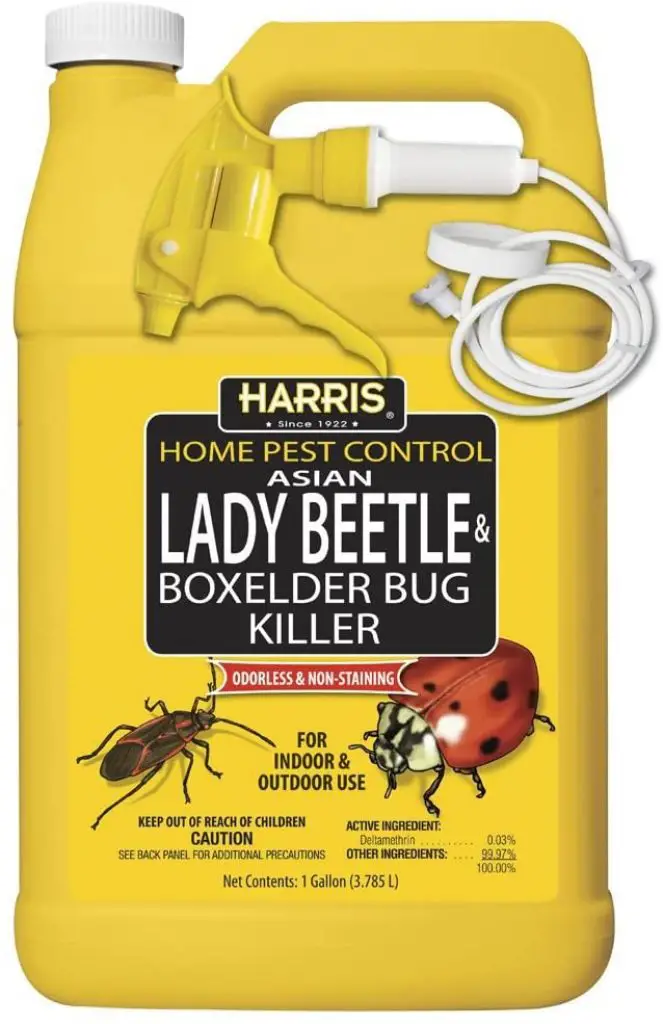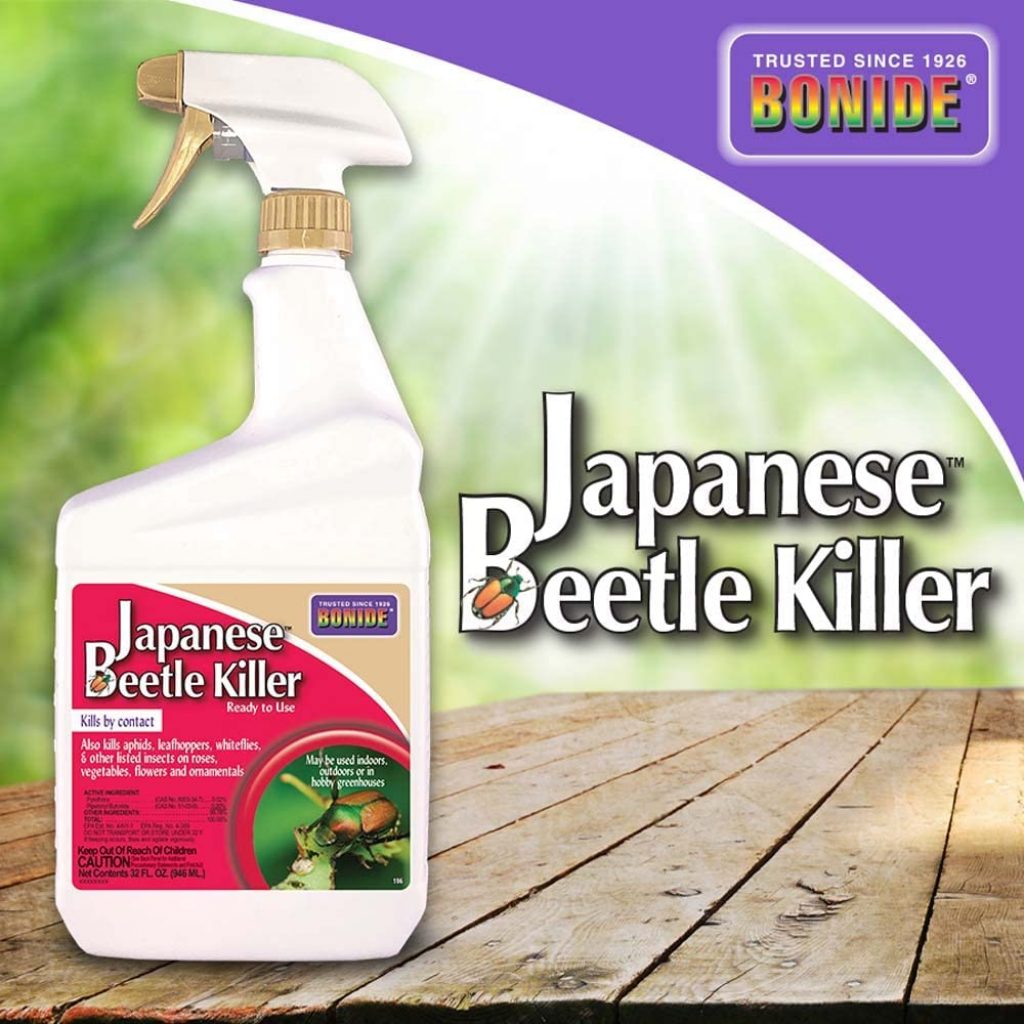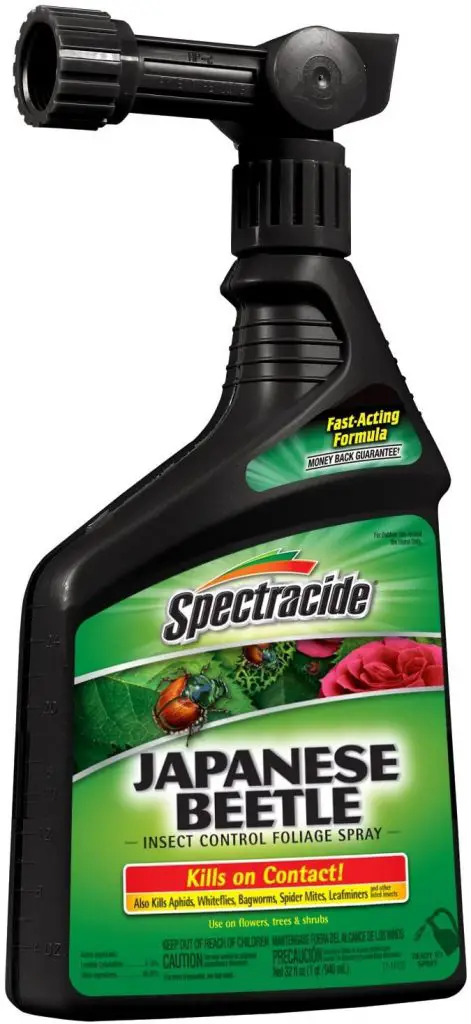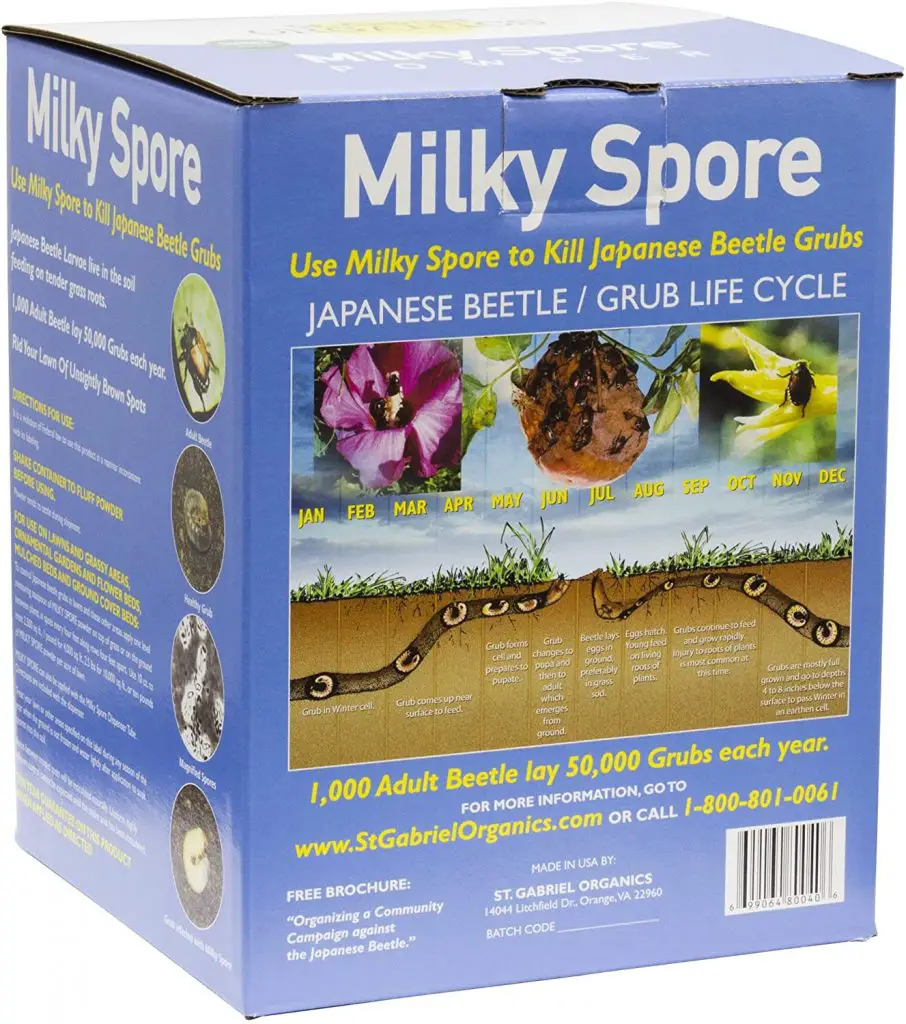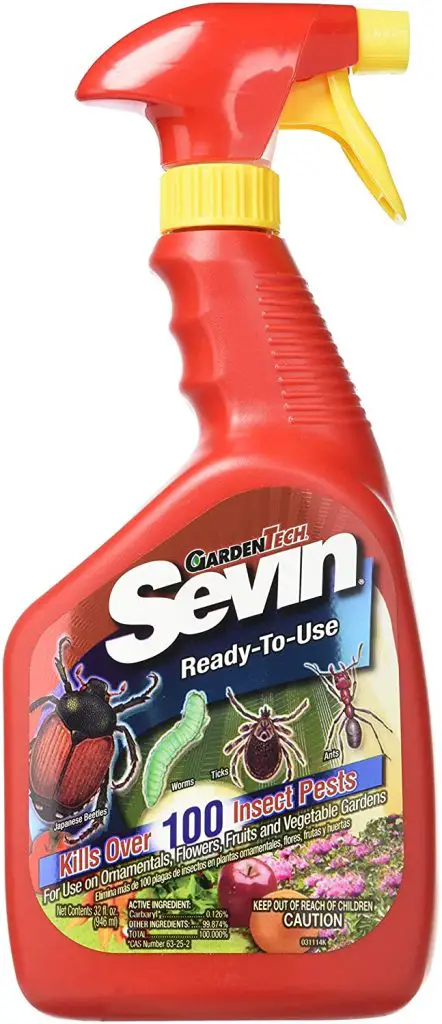How to Get Rid of Asiatic Garden Beetle? Know the easy Steps!
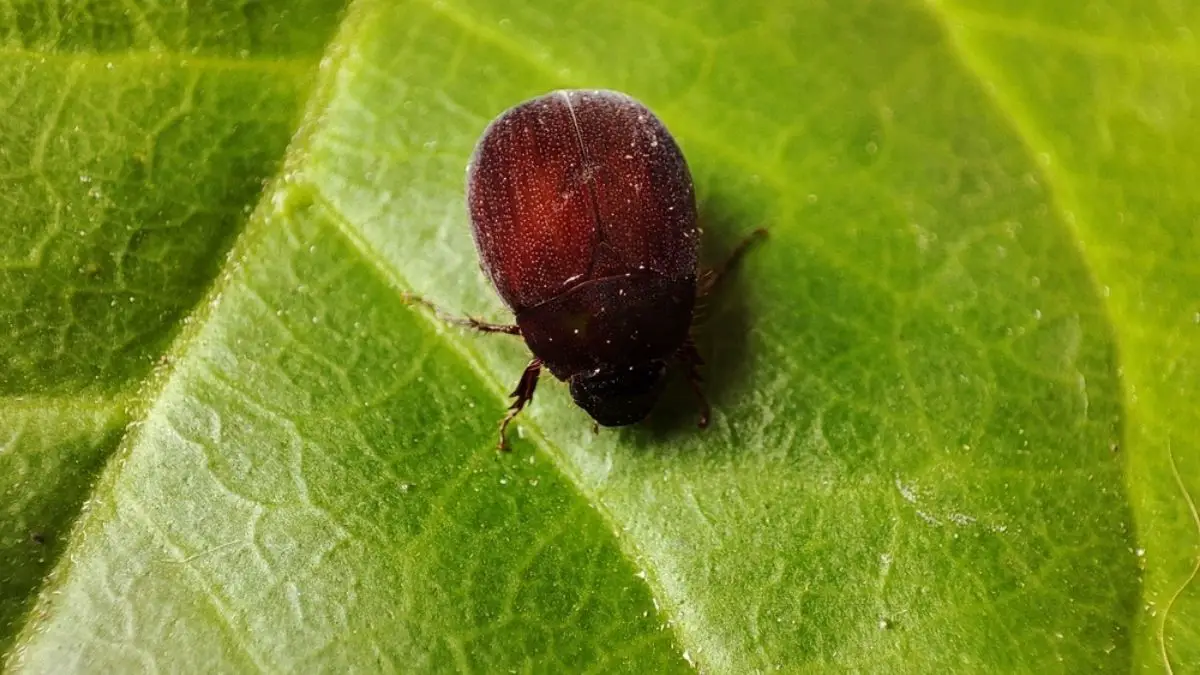
Garden Beetles are a pain for growers. They cause so much damage to the plants that they are one of the most hated insects in the world. One prominent garden beetle is the Asiatic garden beetle.
Right after hatching from eggs, Asiatic Garden beetles start hurting the plants. They feed on roots, leaves, and other parts of the plants. This is why getting rid of them as soon as possible is essential. But How to get rid of Asiatic Garden Beetle? Don’t worry; we are discussing the proven and easy ways to get rid of this annoying creature later in this article!
Whenever Asiatic garden beetles are discussed, Japanese Beetles are discussed too due to the uncanny similarities between the two. Both Japanese Beetle and Asiatic garden beetle are highly disliked by the growers.
But the question is, Are the control measures for the Asiatic beetle the same for the Japanese beetle too?
Here, we are answering these questions along with some more important information which you don’t want to miss. So, stay till the end and know how you should deal with these enemies of plants.
Let’s start with the Asiatic garden beetle!
What is Asiatic Garden Beetle?
Asiatic Garden Beetle (Maladera castanea) is a native insect of Japan and China. It was first discovered in the USA in 1922 and is now one of the most hated beetles (quite rightly so).
Asiatic Garden beetle is small in size, brownish in color, and feeds on many hosts. To your surprise, there are over 100 known hosts of this beetle and most of them are perennial ornamentals.
The adult is 3/8 inch long and is almost the size of a coffee bean. Their larvae are white in color and are half-inch long. Both adult and larval stages are harmful to plants (More on that later!).
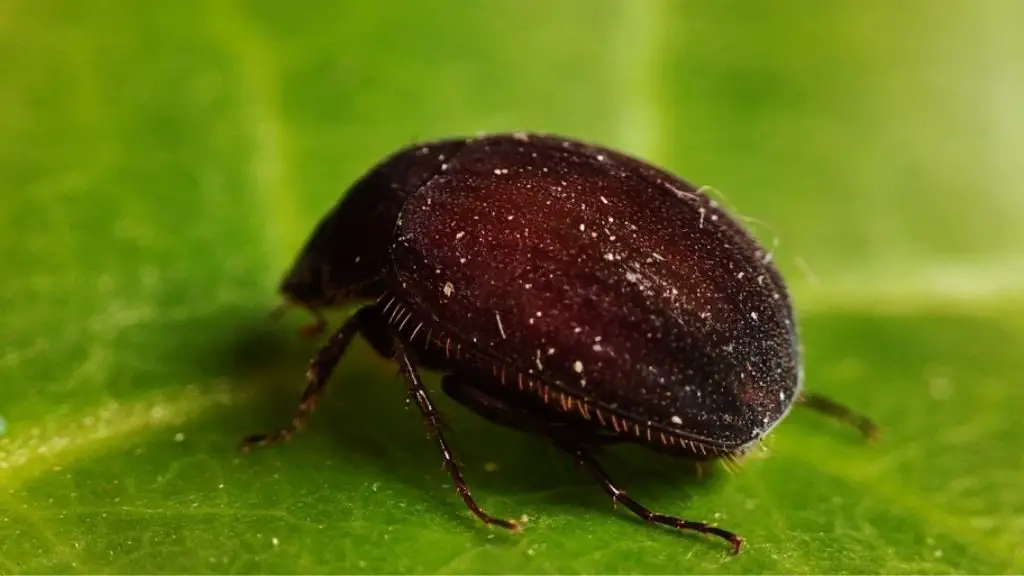
Identification of the Asiatic Garden beetle is easy as there are enlarged maxillary palps just behind its mouth. Let’s have a look at the phases this beetle goes through!
Asiatic Garden Beetle Life Cycle
The Asiatic garden beetle life cycle consists of three phases- egg, larva, and adult.
Eggs: Females lay their eggs in the soil (up to 20). The eggs are hatched after 10 days and larvae come out.
Larva: You can see the first instar larvae in August, the second instar larvae in September and the third instar larvae have a problem to face- The coldness of October.
The larvae start feeding on the roots and organic matter present in the soil.
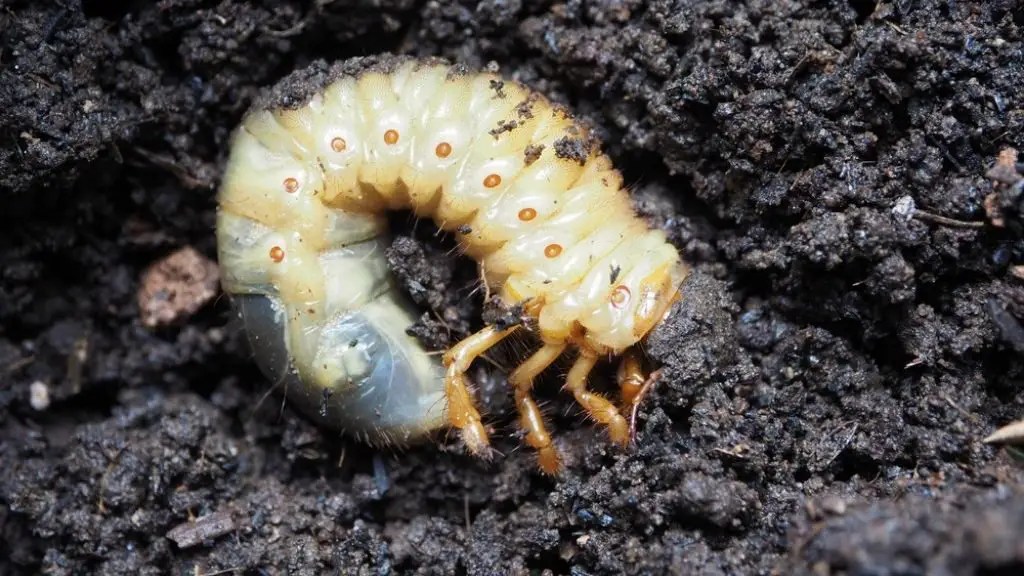
In October, larvae go down up to 17 inches in the soil to avoid winter. Third instar larvae and some remaining two instar larvae then come up during the spring and mature. The maturation completes during June and then comes the pupal stage. This stage is short, spanning over just two weeks.
Adults: Then comes the adult stage ad the Asiatic beetles change the color into reddish-brown. They spend the rest of their lives feeding on plants and mating to reproduce the next generation. Adult Asiatic Garden beetles are active from June to October.
This is the whole Asiatic garden beetle life cycle.
What Plant do Asiatic Garden Beetles eat?
Asiatic garden beetle damage is severe in the sense that the larvae attack roots while the adults attack flowers, fruits, and leaves. No stage of this beetle spare plants.
Want to know What Plant do Asiatic Garden Beetles eat? Well, Asiatic Garden beetle larvae feed on roots of grass and unwanted weeds. They are found around the following weeds:
- Giant ragweed
- Marestail
- Chickweed
- Virginia Creeper
- Pokeweed
- Purple Deadnettle
Adult beetles feed on leaves, fruit, and flowers. They feed on host plants at night and during the daytime, these beetles hide in the soil. Asiatic Garden Beetle damage is visible on the margins of leaves.
Asiatic garden beetles’ favorite plants are:
- Peach
- Carrot
- Strawberry
- Cherry
- Beet
- Eggplant
- Viburnum
- Rose
- Turnip
- Sweet potato
- Soybean
During the night, if you see some beetles near any lighting source, then these might be Asiatic garden beetles as they are attracted to light.
How to get rid of Asiatic Garden Beetle?
If you see the leaf margins are affected and other parts of the plants are getting damaged too, but you can’t see any pest near the plants, it means that the Asiatic garden Beetle is the real cause. They feed at night and hide during the day in the soil.
Visit the plant at night and flash the light on the soil. You will see adult beetles coming towards the light very shortly as they are attracted to the light. So, How to Get Rid of Asiatic Garden Beetle if you find any.
You can apply the different control measures listed below!
Handpicking Asiatic Garden Beetles
HandPicking is one way to get rid of these beetles. This is done in the night when the beetles come out from the soil. Tilling is also a way to kill these insects and larvae within the soil.
Uproot weeds that Give Shelter to Beeltes
Uprooting weeds is another control measure of Asiatic garden beetles. Many weeds are the host of this beetle and uprooting them will deprive the beetle of a home. This is how you can get rid of Asiatic Garden Beetle naturally.
Apply Insecticides
You can use both chemical and organic insecticides to get rid of these beetles. Want to know how to get rid of beetles naturally? Then let us tell you the best method is neem oil application. Buy it from any nearby store, follow the instructions written on the label, and boom, Asiatic garden beetles are gone!
But Asiatic Garden Beetle damage is not even close to the Japanese Beetle damage. Both of the insects are discussed together as they are very similar to each other:
- Both are Scarab beetles
- Larval and adult stages of both beetles affect plants
- Both adults chew plants and larvae feed on the roots
There is one difference between the Asiatic garden beetle and Japanese beetle that, Asiatic beetle feeds at night while the Japanese beetle feeds during the daytime. So where do Japanese beetles go at night? Into the soil to rest!
While we are on that topic, let’s discuss the Japanese Beetle a little more!
What is Japanese Beetle?
Japanese Beetle is one of the vicious insects there are on God’s green Earth. Americans who study history are familiar with the damage this beetle has caused in the past. In 1916 alone, it caused damage worth millions of dollars by feeding on Iris bulbs shipment.
Adult Japanese Beetle lives for only 30-45 days, but they reproduce at an unbelievable rate (laying 60 eggs anywhere). Right after hatching, they start feeding on different parts of the plants. The larval stage feeds on the roots, while adults feed on other parts.
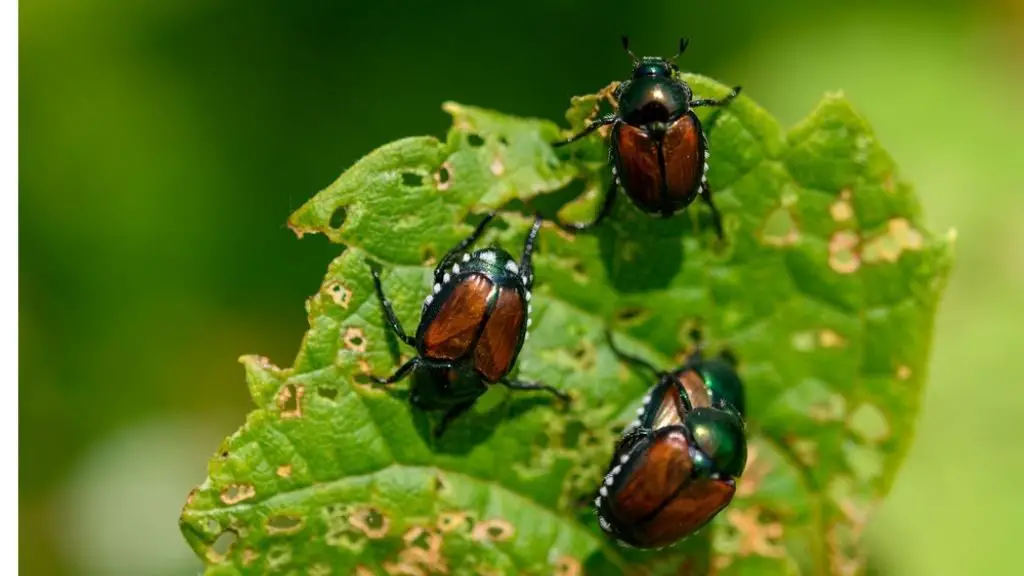
What Plant do Japanese Beetles eat?
Japanese Beetle feeds on more than 300 species of plants which makes them one of the most hated pests too. If you see a leaf, where there is no green part and all it is left is a skeleton, you should know that it is the result of Japanese Beetle feeding.
Mature trees or plants can withstand the invasion of Japanese Beetles but young ones are severely affected. Generally, vegetables and fruit plants are on the list of these beetles. Some of the favorite plants/trees of this insect are roses, peach, crabapple, turfgrass, sassafras, etc.
How to Get Rid of Japanese Beetle?
You can get rid of the Japanese Beetle by following these steps:
Use Japanese Beetles traps
You can use Japanese Beetles traps to control their infestation. There is a yellow top piece attached above a trap as these beetles are attracted to this color. Chemicals are also added to the traps to lure in the beetles.
One chemical is the sex pheromone that attracts males only. The other is the scent of dead flowers that attracts both males and females. Since the dying flower is their favorite food, they go quickly towards the scent and fall into the trap.
But this is not an absolute control measure and you should use some other control methods with the trap as well.
Repel Japanese Beetles with Repelling Scents
Want to know how to get rid of Japanese beetles naturally, then you can do this control measure. There is an antenna on the Japanese beetle which smells scents. The scent of dead Japanese beetle strongly gives the signal to the insect to move out from this place. So, leave the dead Japanese beetle for some time in the garden. Moreover, these beetles also hate the scent of peppermint oil and Juniper berry oil.
Neem oil Spray
People ask, does neem oil kill Japanese beetles and the answer is YES! Apply neem oil to get rid of these beetles. Neem oil is easily available in the market., Buy it, read the instructions on the label, and then follow them to get rid of the beetles.
Best Japanese Beetle Killer in the Market
You can also use some liquids to kill these insects. Have a look at them:
HARRIS Asian Lady Beetle, Japanese Beetle, and Box Elder Killer
The features of this product are:
- It is an EPA-registered spray that kills the beetles when it dries.
- The effect of this spray stays for weeks.
- It is an odorless spray, so you will not have to deal with an unpleasant smell.
- One important characteristic of this spray is that even if it falls on your cloth, it will not leave any stain.
Bonide Japanese Beetle killer
The features of this product are:
- Bonide application is a great way to kill Japanese Beetles, aphids, and other bugs.
- One great thing about this spray is that it does not harm the foliage of the plant.
- You can use this spray both indoors and outdoors. It comes with a nozzle which makes the application super easy.
Spectracide HG-76095 Beetle Killer
The features of this product are:
- It is a fast killing formula that gets rid of beetles quickly.
- It kills the beetles right after contacting them.
- You can use Spectracide to protect trees, shrubs, and ornamental plants. So,if you ask us, how to get rid of japanese beetles on roses, we recommend you this product.
Milky Spore
The features of this product are:
- It is a USA product that kills beetles right after contacting them.
- Use this product outdoors and wear a mask while applying it.
- It is effective for both the larval (grub) stage and for the adult stage too.
Gulfstream Sevin
People frequently search How to Get Rid of Asiatic Garden Beetle after observing the damage on leaf margins. They fear that the invasion of Asiatic garden beetle and Japanese beetle is happening.
One popular product to kill bugs and beetles is Sevin.
So, they also ask, does Sevin kill Japanese beetles and the other bugs? The answer is a big YES!
The features of this product are:
- It can kill up to 150 bugs including Japanese Beetles.
- Kills the insects after contacting them.
- This spray comes with a nozzle and is ready to use straight away.
Japanese Beetle Repellent Plants
Japanese beetle feeds on 300 plant species, yet there are still some plants which they hate. They avoid these plants, so you can use these plants as a control measure.
Following are the plants that repel Japanese Beetles:
- Garlic
- Chives
- Marigold
- Tansy
- Onions
- Rue
- Catnip
- Larkspur
- Leeks
If you want to know how to get rid of beetles naturally, then grow these plants along with your main plants to avoid the Japanese Beetle invasion.
Final Words
All in all, Asiatic and Japanese Garden beetles wreak havoc when they are in great numbers. If you see any of these beetles, then immediately start the treatment before it’s too late. Use Japanese Beetle killers we have described along with other control measures. In addition to this, we also described how to get rid of Asiatic Garden Beetle.
Asiatic garden beetle larvae feed on the roots, and their adults feed on the leaves, flowers, and fruits. Japanese beetle mode of attack is also similar. We suggest you keep observing plants, and when you see any of these beetles, it is time to do what we have recommended for better results!
FAQs
How do I get rid of Asiatic beetles?
People ask, How to Get Rid of Asiatic Garden Beetle, and the steps are simple. You can get rid of the Asiatic Garden beetle by uprooting the weeds, tilling the soil, application of neem oil, and use of traps. You can use both sticky traps or light traps to capture the adults.
How do you get rid of garden beetles?
It is important to get rid of garden beetles to get a high yield. Use organic insecticides like neem oil as a control measure. Moreover, you can use sticky and light traps to capture the adult beetles too. Also, you can grow repellent plants near your main plants as well.
People also ask, will soapy water kill Japanese beetles and the answer is a yes. Furthermore, the application of chemical pesticides should be last on your list due to their hazardous nature.
How do you get rid of garden beetles naturally?
People who care about the environment search, how to get rid of beetles naturally? Well here is the answer. You can get rid of garden beetles naturally by planting garden beetles repellent plants near your plants. Moreover, you can use neem oil, peppermint oil, and Juniper berry oil too which act as repellants.
Related Topics:

